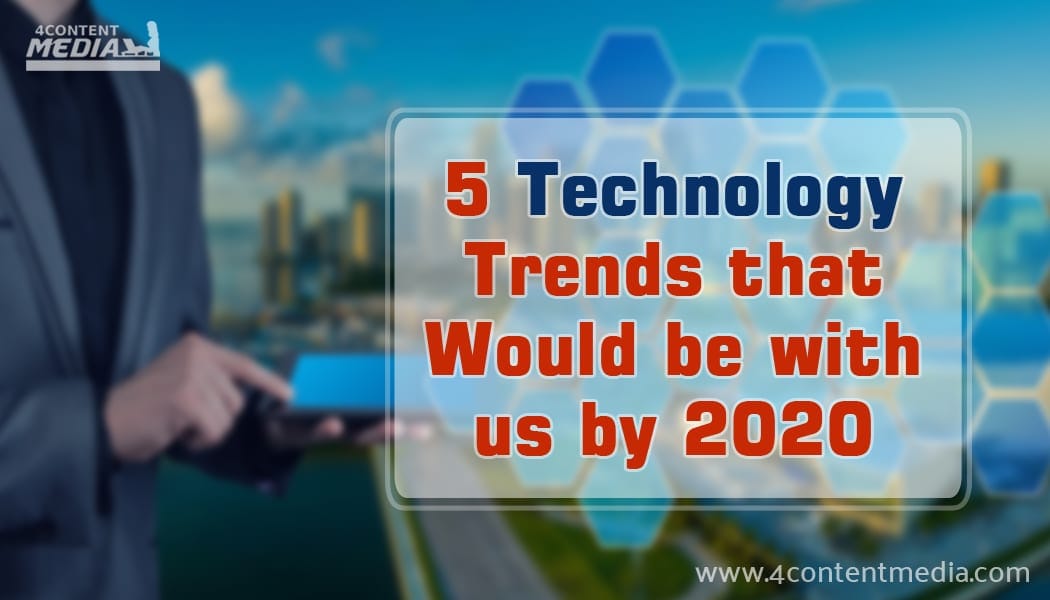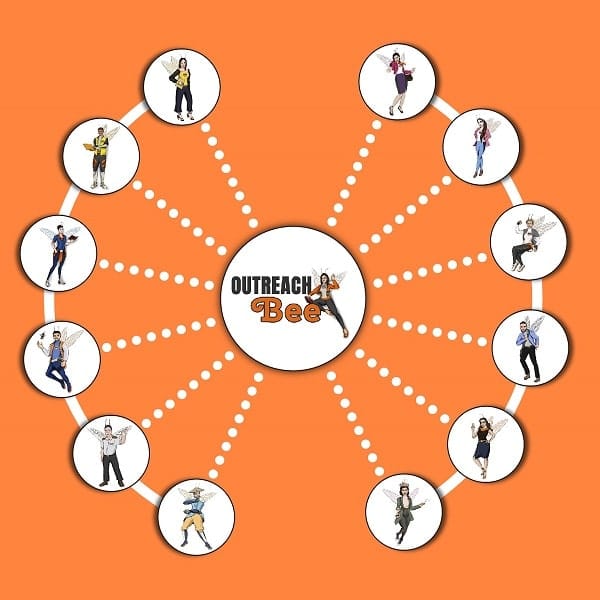Technology trends
Every year we witness several trends in technology but not all of them succeed. There are several trends that shook the world before disappearing into the void within a year or even less. But some trends are more than just “fantastic introductions”. Their utility value, economic viability, purpose-specific nature and tangible benefits have offered them the required stamina to stay for a long time. As we are fast approaching the end of this decade it would be great to know about the impact of such trends on the world by 2020. Let us know about the 5 technology trends that are here to stay for a long time and would be with us by 2020 and beyond:
Data Footprints
Right from sending important business emails to indulging in casual chatting we leave our data footprints while walking the digital lane. It has significantly inflated the volume and size of data. A few figures might be helpful here to understand things more clearly:
- Number of logins received by Facebook every minute: 900,000
- Tweets posted per minute: 450,000
- Emails sent per minute: 156 million
Not all these footprints can be effaced easily and there are provisions to “preserve” the footprints to be used in the future for various activities- right from beneficial job proposals (genuine ones) to innocuous marketing communication and even spam emails or detrimental hacking activities.
Present and Future Impact
- Apart from emails, there are other ways of communication (facebook messages, tweets, etc.) to connect with the netizens whose data footprint can allow a person to track their digital whereabouts.
- They have already started affecting the life of netizens in both good and bad ways and with the increasing data footprints on the digital landscape, the impact can grow exponentially by the end of this decade.
Intelligent things all around
IOT or internet of things has inserted the artificial brain into a number of technical devices. These devices not only collect the data but also mimic the human brain (in a better way!) in using the data in the desired manner to fulfill a specific purpose. For example, your wearable can automatically sync data to your Smartphone and the Smartphone knows how to convert it in the usable form.
Likewise, other technical goods that we use in our daily life have become smart enough to help us connect with the world, communicate with others and automate out various tasks thanks to IoT. The example includes refrigerator, cars, TVs and even the clothes that we wear.
Present and future Impact and/or challenges
- Right from sending an important business communication to the desired contact to ordering a pizza from the nearby restaurant there are several things that you can do with the help of IoT connectivity.
- According to one study, the total number of IoT devices may reach 75 billion by the end of this decade. While it has helped people in various innovative ways, technology has also presented a number of challenges. For example, if your wifi is on, then you may be unknowingly sharing your data with some smart hackers via the networked devices.
- Likewise the digital residue you leave behind while using the IoT devices can be used for any purpose depending upon the intentions of the person who finds it! How this challenge can be resolved while at the same time increasing the number, capability and applications of IoT is interesting and puzzling at the same time.
Beyond Traditional Computing
The first types of computers used to occupy an entire room and delivered something that can be compared to peanuts when we look at the power of computers today. Things have changed massively since, if we take a look at yesteryears and rewind to 1975, we will see that the power of computing is registering a growth of 200% per year!
However, the recent trend is indicating a significant decrease in this growth rate and it doesn’t take much of calculation to speculate that the computing power might be reaching its saturation. Thanks to researchers and experts, there is another avenue to explore and expand the power that could be called “beyond computation”- Quantum computing.
Present and future Impact and/or challenges
- The paradigm shift in the entire model for functionality promised by quantum computing gives us a tangible reason to believe that computers can experience speed and capabilities that are million times better than today. However, we still must see the formal launch of the quantum computing model that is beneficial and economically viable for businesses.
- These computers are the latent license to bring extreme revolution to the computing world by redefining the way their predecessors or ancestors (the current computers) worked.
- What will happen to the traditional model of computers at that time would be an interesting thing to notice and how will it help the good and bad people of the world is another challenge for which we cannot even make any speculations.
Artificial intelligence…and (maybe) digital heart
One of the major blockages for a computer was the inability to “learn”. Unlike human beings, they could not learn by recognizing patterns or using the tacit knowledge until or unless everything was explicitly laid down in the form of technical flowchart decided by human beings. In this way, computers were just “intelligent slaves” or a more positive term would be “babies with an extremely intelligent brain but without a decision power”. The things have changed now.
Present and future Impact and/or challenges
- The artificial intelligence exercises have allowed computers to start mimicking human beings. We still have to see a huge leap of development in this field, but we have already started realizing the benefits of AI.
- Today Amazon has an intelligent Chabot Watson while Cortana is much more beyond the earlier versions of different animated digital assistants of Microsoft.
- The volume of data allows these artificially intelligent assistants to learn quickly and in a better way. Now, as we have seen that the data footprints have already been increasing, we would be justified if we believe that the AI will register a huge growth by 2020.
- The increased data footprints would help them to identify the trends and extract the purpose-specific information that can increase their use in various industries and fields like facial recognition, reading, speaking, listening and even understanding our emotions.
- Can there be a time when the computer will be the real friend of human beings? We have seen the digital brain, but this trend may also result in inserting a digital heart in the devices.
Automation
Automation has redefined the way the world works. Every year or maybe every quarter, some or the other development is being noticed in the field of automation. Computers are aided by functions, processes and streamlined systems that allow them to make quick and accurate decisions even at the most critical junctures of tasks and many times they can take better decisions than human beings, especially while executing the tasks that value accuracy over creativity or intuition.
Present and future Impact and/or challenges
- In the present trend of automation, the tedious, repetitive and time-consuming jobs with less or zero productivity are being handed to the computers. While it has allowed staff to increase their productivity it has also ended several jobs on which human beings were employed. It has eliminated several clerical job posts in many organizations.
- However, now we can see the next phase of auditions where they are able to take the complex business decisions. So, it would be interesting to know that how this new wave will affect the jobs of top management staff.
- There is a various field where intelligence and intuition work together in order to make the right decision like law, science or accounting. How the new wave of automation will help companies to save time and increase productivity would be interesting to see but the more challenging part would be the impact of such intelligent automation on the job market and how the staff or companies will react to the same.
- By the next 1-2 decades the impact of the same on the economies of various industries and countries might also be evident.
I hope you learn something from this technology trends. If you have something to add, please feel free to use the comment box below.
About Author: Annette is a content writer and director of operations. She writes for various industries like travel, wildlife, history, art and of course technology! She works with B2B and B2C businesses providing digital marketing content that gains social media attention and increases their search engine visibility.



SDK vs. API: The Key Difference Explained with Examples
Simple Tips to Protect Your WiFi Network From Hackers